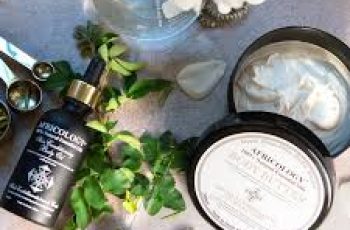Should You Add Blue Light Skincare to Your Anti-Aging Routine?
Blue light skincare products may be the protection your skin needs for all that time spent in front of a screen. Experts explain why.
In today’s world, many of us spend hours tethered to a screen of one type or another—whether it’s a phone, tablet, or a laptop computer.
All of that screen time however, may be impacting your skin thanks to the blue light—or short-wavelength light—that’s emitted, which research has shown can cause everything from premature aging to dark, long-lasting hyperpigmentation.
While it’s unlikely that any of us are about to abandon our phones and computers, there’s a growing variety of skincare products that have been designed to block harmful blue light rays and also address some of their impacts. But are these products all hype? Do they actually help? And if so, what exactly do they do? Here’s a closer look.
What Is Blue Light and Why Is It Harmful?
For those who may not be familiar with the term—blue light is a color on the visible light spectrum that’s emitted by computer screens, TVs, phones, and even as part of regular sunlight, board-certified dermatologist J. Rodney, MD, founding director of Eternal Dermatology Aesthetics and professor of dermatology at Howard University and George Washington University, told Health.
“It’s literally everywhere,” Dr. Rodney said of blue light.
There was a great deal of initial concern in recent years about blue light’s impacts on eyesight and sleep cycles—which are worrisome issues in their own right. But now there’s a growing body of research that has linked higher levels of exposure to blue light—which is also known as high-energy visible light (HEV)—to skin changes including DNA damage and cell and tissue death. Those impacts can, it seems, speed up the aging process and contribute to things like fine lines, wrinkles, and skin discoloration, Dr. Rodney said.
One recent study pointed out that the consequences of modern life is that we are all not getting enough natural light during the day and are conversely being “overexposed” to high levels of artificial light. The study went on to say that our skin is bearing the brunt of that exposure in the form of high levels of “oxidative stress” and that the link between oxidative stress and aging is well documented.
“Recent studies show that exposure of human skin cells to light emitted from electronic devices, even for exposures as short as 1 hour, may cause reactive oxygen species (ROS) generation, apoptosis, and necrosis,” said the study.
Translation: all of that screen time is not doing you—or your skin any favors.
“Blue light…penetrates deeper into the skin than UV light and stimulates activity of pigment-producing cells,” Joshua Zeichner, MD, director of cosmetic and clinical research in dermatology at Mount Sinai Hospital in New York City. That can lead to hyperpigmentation of your skin, among other things, he said. It can also cause melasma, a skin condition that causes patches and spots.
Keep in mind, though, that not all blue light is bad.
“In dermatology, we use blue light for photodynamic therapy in the treatment of acne and [premature] skin cancers,” Cindy Wassef, MD, assistant professor at the Rutgers Robert Wood Johnson Medical School, told Health. “The concern is the more constant, frequent exposure to blue light.”
What Is Blue Light Skincare Exactly?
Blue light skincare takes many forms—from sprays, creams, and gels to sunscreens that can be used to block blue light and also rejuvenate your skin. There are also night creams that promise to reverse the fine lines and wrinkles brought about by blue light and digital defense serums that promise to block the light’s rays to prevent wrinkling in the first place.
Blue light sunscreens meanwhile, work to block UV rays along with the blue light itself, Dr. Zeichner said. The standard sunscreen you grab from your drugstore shelf doesn’t generally offer that double benefit.
“Regular sunscreen doesn’t cover blue light as ideally as the ones targeted to blue light,” Dr. Rodney said. “Blue light tends to get through these, both chemical and mineral sunscreens.”
But there is a caveat here— tinted sunscreens actually do protect against blue light.
“Tinted sunscreen with SPF 30 and higher can protect the skin from blue light as well as UVA and UVB,” New York-based dermatologist Gary Goldenberg, MD, told Health. It’s due to the iron oxide pigments in the tinted sunscreen, Dr. Zeichener explained, noting that “the latest generation of sunscreens now contain antioxidants with visible light protection.”
It’s important to note that the research into blue light’s impact on skin is ongoing, Dr. Wassef added. Nevertheless, dermatologists say blue light sunscreen seems to be worth the hype.
“It gives you a better end result,” Dr. Rodney said.
DQH Can I use salicylic acid first and then vitamin C?
It’s easy to create a skincare routine, but knowing how to use it is another thing entirely. In most cases, if you’re not getting the desired skin results, it could be due to the layering of conflicting ingredients. So, is it possible that salicylic acid and vitamin C are such ingredients? Or are these active ingredients the duo that’s been missing from your skincare routine? If you want answers, stick around because today we are going to explain the benefits of salicylic acid and vitamin C and how they can be used in your daily life.
What are the benefits of salicylic acid for skin?
Salicylic acid is one of the most commonly used beta hydroxy acids and is favored by many people with oily, acne-prone skin. This acid is derived from willow bark, and unlike its water-soluble relatives (called alpha-hydroxy acids), salicylic acid is oil-soluble, which means it can penetrate deeper into the lower layers of the skin. Once it reaches the lower layers, it can help unclog pores of excess sebum, dirt, bacteria, debris, and impurities. This results in clearer skin tones and greater definition.
Not only does salicylic acid benefit the underlying layers, but the outer surface of the skin benefits as well. When applied to the skin, salicylic acid removes the buildup of dead skin cells. This is accomplished by breaking the bonds that hold dead cells to the surface. Over time, this can cause the complexion to look dull and prone to acne, blackheads, and other blemishes.
If you’d like to learn more about salicylic acid and how it can improve your skin, check out this dedicated blog post from a beauty insider.
What are the benefits of vitamin C for skin?
Vitamin C is considered one of the most powerful antioxidants, which means it is very effective at fighting free radicals and preventing them from causing further skin damage. Examples of free radicals include pollution, central heating, UV rays and harsh climate. They attack proteins, fats and cell membranes as soon as they come into contact with the skin, causing signs of premature aging such as fine lines and wrinkles as well as hyperpigmentation, flaky patches of skin and loss of elasticity.
Many people usually prefer to use vitamin C in their morning routine as this ingredient gives the complexion a radiant glow. You’ll also find that vitamin C can target areas of hyperpigmentation, plumping the skin and reducing the appearance of fine lines and wrinkles.
The thing about vitamin C is that there are a lot of outdated studies going back to the 1950s that describe vitamin C as an unstable skin component. Thanks to improvements in modern technology, this is no longer the case as all products now contain a stable form of vitamin C.
Visit The Beauty Insider to learn more about vitamin C. So please check out our blog post.
Can I use salicylic acid first and then vitamin C?
Yes, you absolutely can. In fact, it’s thought that using salicylic acid before using vitamin C ensures it penetrates faster and works faster.
This is an efficient way to utilize two power sources, and the reason has to do with pH. For example, the skin’s natural pH is about 4.7, making it slightly acidic. Salicylic acid and vitamin C are also both acidic, and you’ll find that vitamin C is absorbed quickly into the skin. Therefore, using salicylic acid beforehand can increase the acidity of the skin and allow vitamin C to penetrate into the skin faster.
While this is considered an effective way to combine two powerful ingredients, you need to be aware of your skin type and how it reacts to certain active ingredients. Even people with perfect, normal skin can experience skin sensitivity and irritation. Therefore, always consult a doctor or dermatologist before using any new products on your skin.
It’s also important to follow skin application rules. In this case, you need to use the product correctly to ensure you get the best results for your skin. If you’re not sure what I mean, the basic rule for skin is to start with the thinnest consistency and work your way up to the thickest consistency. This prevents a barrier from forming on the surface, preventing other active ingredients from penetrating the skin.
Can I use salicylic acid at night and vitamin C in the morning?
Yes, absolutely, this is considered the most effective way to get returns without any adverse side effects. This is because there is enough time between applications to ensure that the skin’s pH levels return to balance.
You’ll also find that Vitamin C is rich in antioxidants and is perfect for use in the morning to ensure your skin is protected and looking its healthiest. Due to the small size of salicylic acid molecules, it is an acid that is able to reach the deepest parts of the skin. While this is effective at keeping skin clear, it also increases the risk of irritation and photosensitivity. Therefore, many people prefer to use powerful BHAs in their evening routine without exposure to UV rays, pollution, or harsh weather.
Warning: If you avoid using sunscreen every day, none of these ingredients will do what your skin needs. The combination of chemical peels and powerful ingredients increases the risk of further damage to the skin’s surface. Use SPF 50 every day to keep your skin protected and your lipid barrier healthy, even on cloudy days, keeping your skin in top condition.



